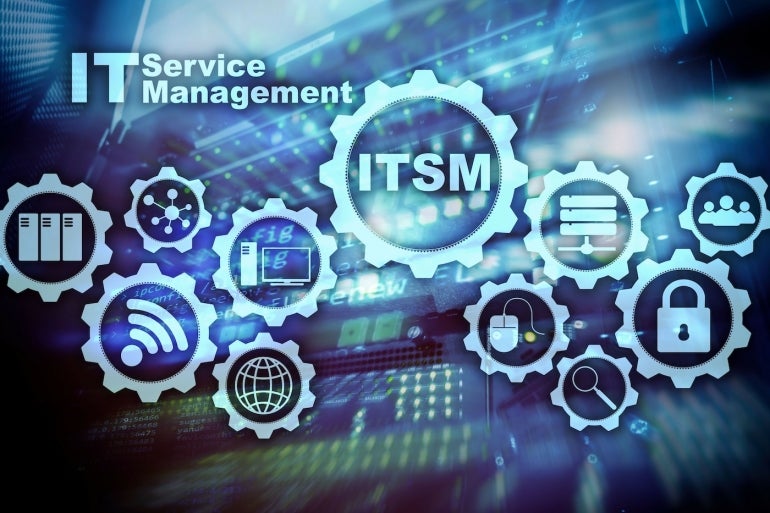Utilizing IT service management can help cut costs and reduce the hassle of running your own technology services.

IT managed services are prepackaged hardware, application software and associated support, usually sold with “bundled” pricing. Subscription-based cloud applications fall into this category, and if your company already uses Google Workspace, Microsoft 365 or Adobe Creative Cloud, you’ve experienced a managed service.
SEE: Learn how to best use ITSM for business success.
You can even purchase managed services for specific components of your current technology infrastructure, ranging from email services to network monitoring and management to cybersecurity. In each case, an external party maintains the software, infrastructure and end-user support.
6 key benefits of ITSM
1. Predictable costs
Perhaps the most significant benefit of managed services is that costs are predictable and generally based on a metric like the number of users or a monthly or annual fee.
2. Reducing tech staffing challenges
Finding and retaining IT talent is difficult, especially for specialized applications or domains. This difficulty gets compounded for smaller organizations that need high-end IT services but may not have enough volume to justify full-time experts. Using a managed service provider opens up access to a pool of tech talent that doesn’t end up as full-time resources on your payroll.
3. Freeing resources
Managed services allow you to focus scarce resources on the projects that provide the most business benefit. Using managed services can free up staff time and funding for areas that offer the most business benefit. If your tech staff no longer have to worry about supporting network ops or collaboration software, they can focus their attention elsewhere.
SEE: Explore our list of the best resource management tools.
4. Access to high-end tools
Managed services ultimately allow you to “pay for what you use” versus paying to acquire software licenses and support in large increments. This can enable your company to access technology and resources that would be unaffordable if purchased on the open market.
Before dismissing a platform as too expensive, see if you can purchase access to that platform as a managed service; you may be surprised to discover the costs and support are far more reasonably priced.
5. Improved support
Since most MSPs specialize in serving multiple clients around the country or the world, they often have robust tech support organizations that operate across time zones and locations.
6. Simplified scalability
Adding users, capacity or performance can be as simple as updating your MSP agreement via an online portal versus assessing and upgrading an in-house technology platform. In an uncertain business environment, the ability to scale your managed services and only pay for what you require can be a significant asset.
Drawbacks of ITSM
Most choices are not without potential drawbacks, and those related to IT managed services stem from the fact that you’re putting technology infrastructure and resources in another party’s hands. Key potential disadvantages include the following.
Vendor risk
Like any vendor relationship, it pays to do your homework and ensure your managed service provider is reliable and capable of meeting your requirements. It can be challenging to migrate to another MSP, so be sure to factor in the reliability and longevity of potential vendors.
Limited control
As with any set of resources you don’t directly control, you’ll give up a degree of control over the technology and people during a transition to managed services. You may no longer have access to certain aspects of the technology platform and lose the ability to control the staff that supports your technology directly.
Business risk
Just as you give up a measure of control over the technology and supporting staff, you have little control over the business decisions of your MSP. That company may decide to abandon the technology upon which your company relies, arbitrarily raise prices or exit the MSP business.
SEE: Minimize risk by following these best practices.
ITSM best practices: How to get started
Perhaps the most crucial element of getting started with IT managed services is understanding that this is both a technology and a business decision. Assessing the long-term viability of your MSP, understanding the pricing and contract terms and setting the foundation for a productive relationship is perhaps even more important than the quality of the technology.
You’ll also need to assess the MSP’s staff and support resources and how they’ll assist you in transitioning in-house resources into a managed service. Like most business decisions, cost should not be your only factor. Taking time to assess what you’re trying to accomplish as well as the criteria for success will help shape your MSP selection and position your company for a successful relationship.
Source of Article



